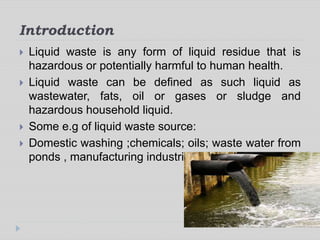Some Known Factual Statements About Reclaim Waste
Some Known Factual Statements About Reclaim Waste
Blog Article
The Only Guide to Reclaim Waste
Table of ContentsThe Single Strategy To Use For Reclaim WasteWhat Does Reclaim Waste Mean?Not known Factual Statements About Reclaim Waste Some Known Facts About Reclaim Waste.Reclaim Waste Fundamentals Explained
Domestic sewage waste refers to the waste and items from a domestic septic container. The correct administration and disposal of domestic sewer waste need fluid waste to be moved to a sewage treatment plant where the correct methods and equipment are used to detoxify and dispose of waste.
Business waste usually includes prospective threats, such as flammable products or a blend of liquid and solid waste items, and calls for an extra advanced and comprehensive disposal process. The disposal of industrial waste typically entails the filtration of waste prior to transport to guarantee risk-free and correct disposal. Industrial waste is produced from results and drainage of industrial procedures and manufacturing.
This type of waste can not make use of the same sewage management transportation or procedures as septic or commercial fluids. The hazardous waste management procedure needs the inspection and testing of fluid waste before it undergoes the disposal procedure (liquid waste removal melbourne). Drainage waste is the liquid waste that originates from overflow and excess stormwater in extremely inhabited areas or cities
Overflow waste can create contamination and flooding if not managed correctly. Find out more about drain cleaning and waste management. Making sure appropriate waste administration can protect against calamities and lower ecological damage. Both individuals in property settings and professionals in industrial or production industries can profit from recognizing the procedures and laws of fluid waste monitoring.
Get This Report about Reclaim Waste
Get in touch with PROS Services today to discover about our waste administration and disposal services and the correct means to take care of the fluid waste you produce.
(https://www.anyflip.com/homepage/imqzz#About)This supposed 'wastewater' is not just a vital resource however, after therapy, will certainly be released to our land, waterways or the ocean. Utilized water from bathrooms, showers, baths, kitchen area sinks, laundries and industrial processes is understood as wastewater.

water used to cool down equipment or clean plant and equipment). Stormwater, a type of wastewater, is runoff that streams from farming and city areas such as roofings, parks, gardens, roads, paths and gutters right into stormwater drains pipes, after rain. Stormwater streams unattended straight to neighborhood creeks or rivers, at some point reaching the sea.
Reclaim Waste - An Overview
In Queensland, most wastewater is treated at sewage treatment plants. Wastewater is transported from domestic or commercial websites via a system of sewage systems and pump terminals, known as sewage reticulation, to a sewer therapy plant.
The Division of Natural Resources suggests neighborhood federal governments concerning handling, operating and preserving sewerage systems and treatment plants. In unsewered locations, city governments might call for owners to set up individual or household sewer treatment systems to treat domestic wastewater from commodes, cooking areas, shower rooms and laundries. The Department of Natural Resources authorizes making use of household systems when they are proven to be effective.
Many stormwater receives no therapy. industrial wastewater treatment In some brand-new class, treatment of some stormwater to remove clutter, sand and crushed rock has started utilizing gross contaminant traps. Wastewater therapy happens in four phases: Eliminates solid issue. Larger solids, such as plastics and other items wrongly discharged to sewers, are gotten rid of when wastewater is passed via displays.
Wastewater then moves into huge storage tanks where solids settle and are eliminated as sludge. Oil and scum are skimmed from the surface area. Makes use of small living microorganisms referred to as micro-organisms to break down and eliminate remaining liquified wastes and fine bits. Micro-organisms and wastes are included in the sludge. Eliminates nitrogen and phosphorus nutrients that can cause algal blossoms in our rivers and threaten water life.
More About Reclaim Waste
Nutrient removal is not readily available at all sewer therapy plants since it calls for expensive specialized tools. Clear fluid effluent produced after treatment may still include disease-causing micro-organisms - industrial wastewater treatment.

This typically suggests wastewater needs to be dealt with or contaminants eliminated before it can be discharged to waterways. The majority of wastewater moves right into the sewerage system. Under the Act, city governments provide approvals and licences for eco pertinent activities (Periods) including wastewater releases that might have a neighborhood influence. The division administers authorizations and permits to ERAs involving wastewater releases that could have a regional or statewide impact.
The Reclaim Waste PDFs
Monitoring offers accurate info about water high quality and can validate that permit problems are being met. The info gotten via surveillance gives the basis for making water top quality choices.
Report this page